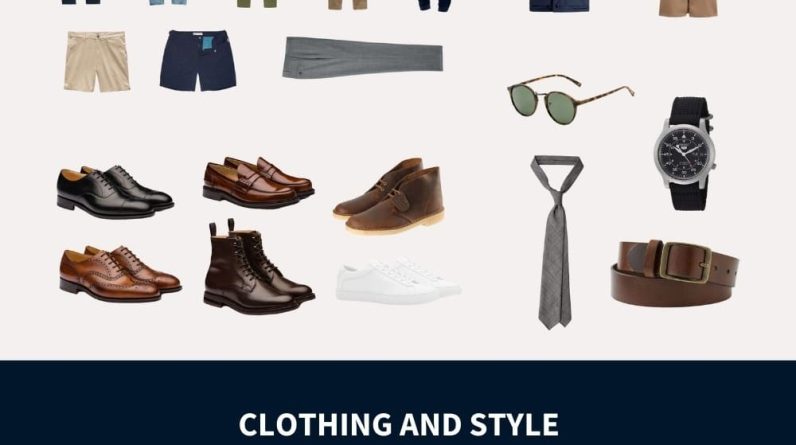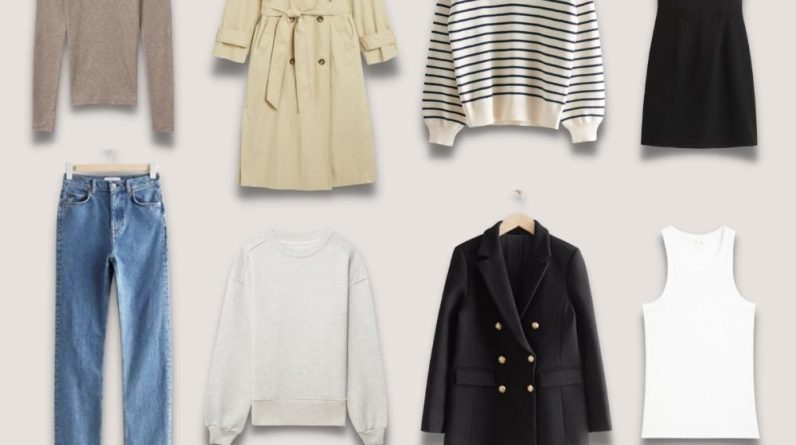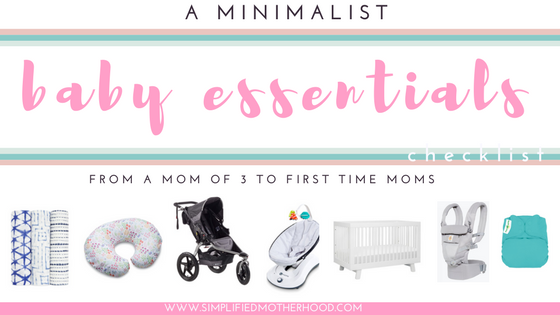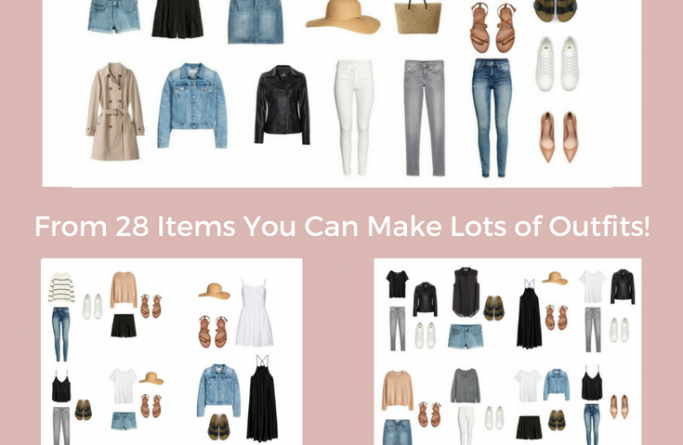
So, you want to create a wardrobe that’s simple, stylish, and versatile? Look no further, because we’ve got the ultimate guide for you. In this article, we’ll show you how to curate a minimalist wardrobe that’s timeless, functional, and suits your personal style. Whether you’re a fashion enthusiast or just looking to declutter your closet, this guide will provide you with the essential tips and tricks to achieve the perfect minimalist wardrobe for 2024 and beyond. Say goodbye to the chaos of endless options and hello to a streamlined collection of clothing that effortlessly complements your every outfit. Are you ready to embark on this minimalist journey with us? Let’s get started!
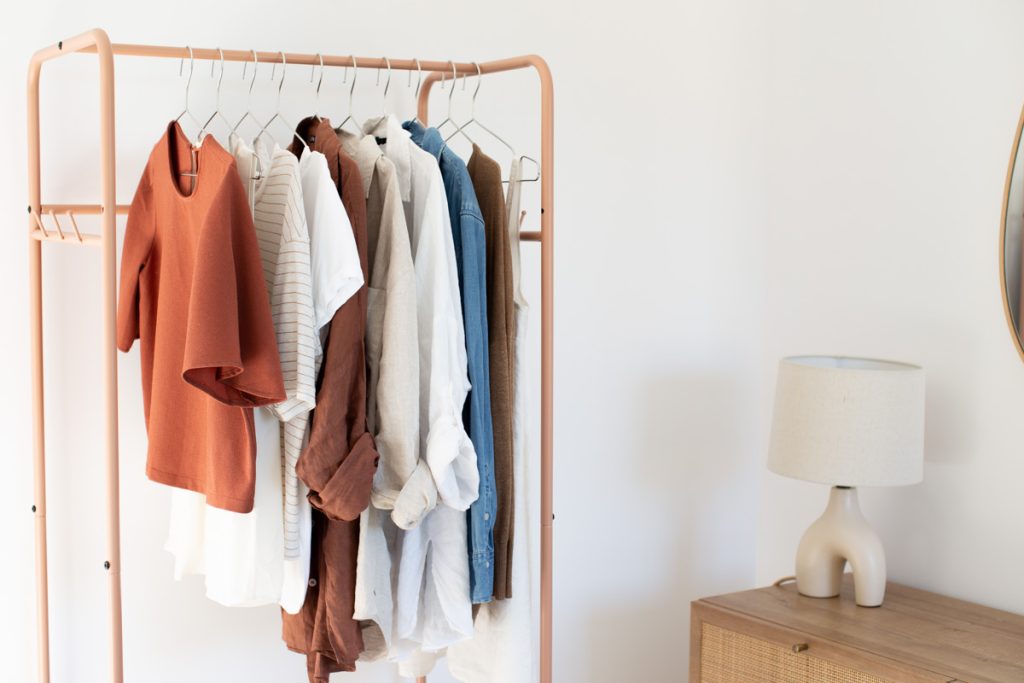
This image is property of modernminimalism.com.
Table of Contents
Determining Your Personal Style
Fashion is a powerful form of self-expression, and finding your personal style can be an exciting journey of self-discovery. To start, it’s essential to assess your current wardrobe and identify your preferences. Take some time to go through your clothes and determine what speaks to you and what doesn’t. Look for patterns in the types of garments, colors, and silhouettes that you gravitate towards. This will give you a better understanding of your personal style and help you make more informed choices when exploring different style aesthetics.
Assessing your current wardrobe
Begin by going through your wardrobe item by item and asking yourself a few key questions. Do you love the fit and feel of a particular piece? Or does it make you feel confident and effortlessly stylish when you wear it? If the answer is yes, these are the items you should hold onto. On the other hand, if there are pieces that you haven’t worn in a long time or don’t make you feel great, it may be time to let go. Be honest with yourself and make room for pieces that truly align with your personal style.
Identifying your preferences
When it comes to personal style, there are no right or wrong answers. It’s all about what makes you feel the most like yourself. Take note of the colors, patterns, and fabrics you enjoy wearing, as well as the silhouettes that flatter your body shape. Consider how you want to present yourself to the world and what message you want your clothing to convey. Are you drawn to a minimalistic, monochromatic aesthetic? Or do you prefer bold prints and vibrant colors? Identifying your preferences is key to building a wardrobe that reflects who you are.
Exploring different style aesthetics
Once you have a better understanding of your personal style, it can be fun to explore different style aesthetics that align with your preferences. Take inspiration from fashion magazines, social media, and even people you admire. Pay attention to the details, such as the types of fabrics, cuts, and styling techniques used in different looks. Experimenting with different style aesthetics will allow you to discover new ways to express yourself through clothing and help you further refine your personal style.
Decluttering Your Wardrobe
Having a clutter-free wardrobe is essential to creating a minimalist and functional space. Decluttering not only helps you let go of items you no longer wear but also allows you to create a curated wardrobe that reflects your personal style. To effectively declutter your wardrobe, follow these simple steps.
Set a decluttering goal
Before diving into decluttering, it’s helpful to set a goal for yourself. This could be a specific number of items you want to get rid of or a desire to create a more cohesive and organized wardrobe. By setting a goal, you’ll have a clear vision of what you want to achieve, making the decluttering process more manageable.
Categorize your clothing items
To tackle the decluttering process, start by categorizing your clothing items into different groups. This could include tops, bottoms, dresses, outerwear, and accessories. Once you’ve categorized everything, go through each group one by one and make a decision about each item. Ask yourself if it truly aligns with your personal style and if you can envision yourself wearing it in the future. If the answer is no, set it aside to either donate, sell, or give away to friends or family.
Utilize the KonMari method
The KonMari method, popularized by Marie Kondo, is a decluttering technique that focuses on only keeping items that spark joy. To apply this method to your wardrobe, hold each item in your hands and pay attention to how it makes you feel. If it brings you joy or a sense of excitement, hold onto it. If it doesn’t, it’s time to let it go. This method can be incredibly effective in creating a wardrobe filled with items that you truly love and enjoy wearing.
Building a Capsule Wardrobe
A capsule wardrobe is a curated collection of versatile and timeless pieces that can be mixed and matched to create a variety of outfits. Building a capsule wardrobe not only reduces decision fatigue but also promotes sustainable fashion choices. Here’s how to get started.
Understanding the concept of a capsule wardrobe
The concept of a capsule wardrobe revolves around having a limited number of high-quality and versatile clothing items in your collection. The idea is to have fewer items that can effortlessly be mixed and matched to create various outfits. By focusing on quality over quantity, you can invest in pieces that will stand the test of time and adapt to different seasons and occasions.
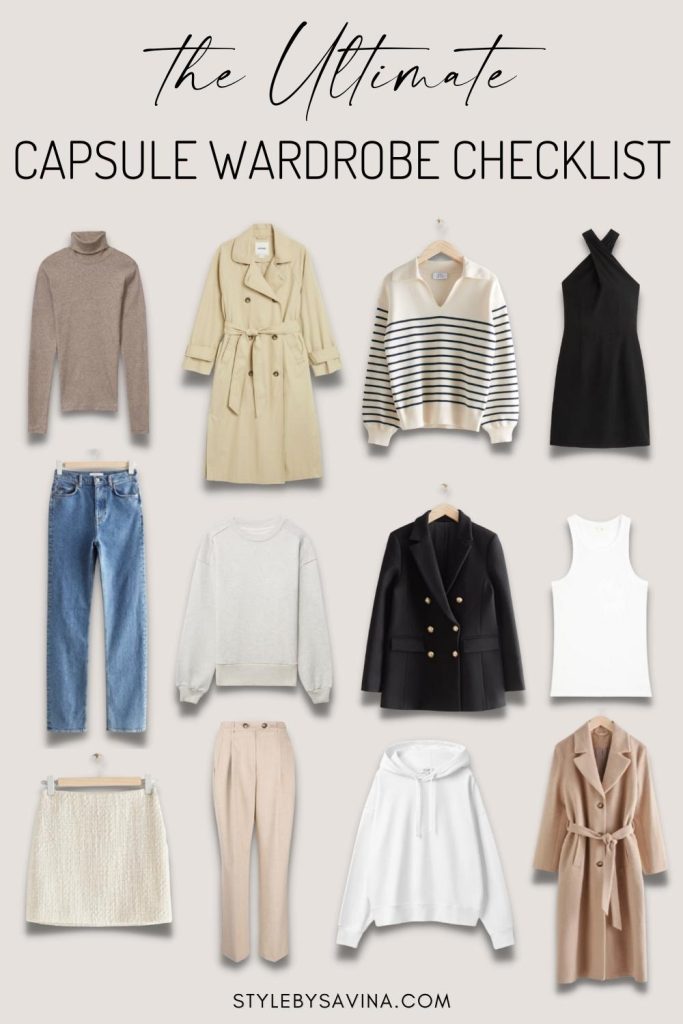
This image is property of www.stylebysavina.com.
Choosing versatile and timeless pieces
When building a capsule wardrobe, it’s important to choose pieces that can be worn in a variety of ways. Opt for classic silhouettes and neutral colors that can easily be dressed up or down. A well-fitting pair of jeans, a white button-down shirt, and a little black dress are just a few examples of versatile and timeless pieces that can become the foundation of your capsule wardrobe. Remember, quality is key, so invest in pieces made from durable fabrics that will last.
Creating a color palette
A well-curated capsule wardrobe often features a thoughtfully selected color palette. Select a few colors that complement each other and align with your personal style. This will make it easier to mix and match different pieces in your collection while still maintaining a cohesive and stylish look. Consider the colors that make you feel confident and happy when you wear them, as well as those that flatter your skin tone.
Investing in Quality Basics
Wardrobe basics are the building blocks of a functional and versatile wardrobe. These are the items that you can rely on and easily pair with other pieces to create a variety of outfits. When investing in quality basics, keep the following considerations in mind.
Identifying key wardrobe staples
Key wardrobe staples are timeless pieces that remain relevant season after season. These include items such as a well-tailored blazer, a classic white t-shirt, a crisp button-down shirt, a versatile pair of trousers, a tailored coat, and comfortable shoes. By having these staples in your wardrobe, you’ll always have a foundation to build upon and create stylish looks for any occasion.
Considerations when purchasing basics
When purchasing basics, it’s important to prioritize quality. Pay attention to the fabric composition and construction of the garment. Look for natural fibers like cotton, linen, and silk, as they tend to be more durable and breathable. Additionally, consider the fit and silhouette – opt for pieces that flatter your body shape and make you feel comfortable and confident. Remember, basics are meant to be the backbone of your wardrobe, so invest in pieces that will withstand frequent wear and washing.
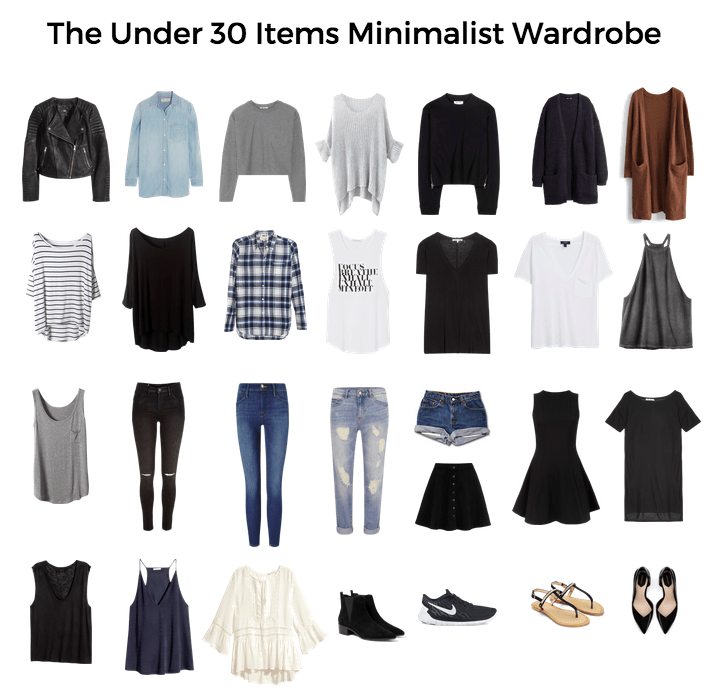
This image is property of i0.wp.com.
Mindful shopping for quality items
When it comes to investing in quality basics, adopting a mindful shopping approach is crucial. Take your time to research brands known for their commitment to ethical and sustainable practices. Look for certifications such as fair trade or organic, as they indicate that the brand prioritizes the welfare of garment workers and the environment. Additionally, consider shopping second-hand or vintage to extend the lifespan of clothing items and reduce your carbon footprint.
Maximizing Versatility with Accessories
Accessories are a powerful tool in elevating and transforming your outfits. They can add personality, texture, and interest to even the simplest of looks. Here are some key points to consider when utilizing accessories to maximize versatility.
The importance of accessories
Accessories have the ability to take your outfit from ordinary to extraordinary. They can completely change the vibe of an ensemble and allow you to express your personal style in a unique way. Whether it’s a statement necklace, a colorful scarf, or a stylish belt, accessories can add that finishing touch that ties your look together and makes it truly yours.
Essential accessories to have
While the types of accessories you choose to wear will depend on your personal style, there are a few key pieces that can elevate any outfit. A classic watch, a quality handbag, and a versatile pair of sunglasses are timeless accessories that add a touch of sophistication to any ensemble. Additionally, statement jewelry, such as earrings or a bracelet, can add interest to simple outfits, while scarves can provide color and texture.
Styling tips for accessorizing
When it comes to accessorizing, there are no hard and fast rules. However, there are a few guidelines that can help make the process easier. Consider the occasion and the overall vibe you want to achieve. If you’re aiming for a casual look, opt for minimalistic accessories that add subtle flair. For a more formal occasion, choose statement pieces that can become the focal point of your outfit. Remember, accessories should complement your look, so make sure they enhance the overall aesthetic rather than overpowering it.

This image is property of classyyettrendy.com.
Organizing and Storing Your Wardrobe
An organized and well-maintained wardrobe not only makes getting dressed a breeze but also helps extend the lifespan of your clothing. Here are some tips to help you create a functional wardrobe layout and utilize storage solutions effectively.
Creating a functional wardrobe layout
When organizing your wardrobe, it’s important to create a layout that works for you and your specific needs. Start by grouping similar items together, such as tops, bottoms, dresses, and outerwear. Within each category, consider organizing further by color or style. This will make it easier to locate specific items and plan outfits. Additionally, ensure that your most frequently worn pieces are easily accessible, while seasonal or occasional items can be stored elsewhere.
Utilizing storage solutions
Storage solutions play a crucial role in maintaining an organized wardrobe. Invest in high-quality hangers to keep your clothes in shape and prevent wrinkles. Consider using shelves or cubbies for items such as sweaters or handbags. Drawer dividers can be useful for storing smaller accessories like socks or jewelry. Shoe racks and clear storage bins can also be beneficial for keeping your footwear organized and protected.
Maintaining a clutter-free wardrobe
To maintain a clutter-free wardrobe, it’s important to regularly assess and edit your collection. Set aside time each season to review your clothing and accessories, letting go of items that no longer serve you. Additionally, practice putting items back in their designated places after each wear. This will not only prevent clutter from accumulating but also save you time and frustration when getting dressed in the morning.
Mixing and Matching
One of the advantages of having a well-curated wardrobe is the ability to create countless outfit combinations. Here are some tips to help you mix and match your clothes effortlessly.

This image is property of chloearchard.com.
Creating outfit combinations
When creating outfit combinations, start by identifying key pieces in your wardrobe that you want to center your outfits around. This could be a statement blouse, a pair of tailored trousers, or a versatile skirt. Then, explore different ways to pair these pieces with other items in your collection. Don’t be afraid to mix prints, textures, and colors – sometimes unexpected combinations can result in the most interesting and stylish looks.
Layering techniques for different seasons
Layering is a skill that can elevate your outfits and allow you to wear your favorite pieces throughout the year, regardless of the season. Start with lightweight and breathable base layers, such as a fitted t-shirt or tank top. Add on layers depending on the temperature and your personal style – a cardigan, a tailored blazer, or a cozy sweater can all work well. Experiment with different lengths and proportions to create depth and visual interest.
Experimenting with different styles
Having a defined personal style doesn’t mean you have to stick to one aesthetic all the time. Feel free to experiment with different styles, trends, and silhouettes. Incorporate elements from different aesthetics into your outfits to create a unique and dynamic look. Remember, fashion is meant to be fun and expressive, so don’t be afraid to step outside your comfort zone and try something new.
Transitioning Your Wardrobe for Different Seasons
As the seasons change, so should your wardrobe. Transitioning your wardrobe effectively ensures that you’re prepared for different weather conditions while still maintaining a minimalist and functional collection of clothing. Here’s how to do it seamlessly.
Storing off-season clothing properly
When transitioning your wardrobe, it’s important to store off-season clothing properly to maintain its quality. Start by cleaning all items before storing them. This helps prevent stains and odors from setting in and keeps your clothes fresh for the next season. Use breathable storage containers or garment bags to protect your clothing from dust, moisture, and pests. Store them in a cool, dry place away from direct sunlight.
Integrating seasonal pieces without clutter
While transitioning your wardrobe, assess the current season and identify key pieces that can be incorporated into your outfits seamlessly. Look for items that can be layered or mixed and matched with your existing collection. This way, you can enjoy the flexibility of different styles and trends without overcrowding your closet.
Layering for warmth or coolness
Layering is not only a great way to express your personal style but also allows you to adapt to changing temperatures throughout the day. During colder months, focus on layering items made from warm and insulating fabrics like wool or cashmere. Experiment with different combinations of tops, sweaters, jackets, and scarves to find the perfect balance of warmth and style. When the weather gets warmer, opt for lightweight and breathable fabrics that can be easily removed or tied around the waist if needed.
Developing a Sustainable Wardrobe
In recent years, the fashion industry’s environmental impact has become a growing concern. Developing a sustainable wardrobe involves making conscious choices to reduce waste and support ethical practices. Here’s how you can make a difference.
Understanding the environmental impact of fast fashion
Fast fashion refers to the production of inexpensive and quickly changing clothing trends. However, this fast-paced model has severe environmental consequences. From water pollution and excessive greenhouse gas emissions to textile waste and unethical labor practices, the fashion industry’s impact on the planet is vast. By understanding these issues and making informed choices, you can contribute to a more sustainable future.
Opting for sustainable and ethical brands
When building a sustainable wardrobe, opt for brands that prioritize environmental and ethical practices. Look for certifications such as organic, fair trade, or vegan, which indicate a commitment to responsible production methods. Research brands’ supply chain transparency and labor practices to ensure that workers are treated fairly. Additionally, consider supporting local and independent designers who tend to have a smaller carbon footprint and produce garments in limited quantities.
Clothing care and maintenance
Proper clothing care and maintenance are essential to sustainability. Extend the lifespan of your garments by following care instructions on labels, such as washing in cold water and air-drying whenever possible. Repair garments when they have minor damages instead of discarding them. Additionally, consider donating or recycling clothing items that are no longer suitable for wear. By taking care of your clothes, you reduce waste and contribute to a more sustainable wardrobe.
Mindful Shopping Practices
Shopping mindfully is an essential aspect of maintaining a minimalist wardrobe and making conscious fashion choices. Here are some practices to help you shop more intentionally.
Avoiding impulse purchases
Impulse purchases often lead to regrets and cluttered wardrobes filled with items that don’t align with your personal style. Before making a purchase, take a moment to reflect on whether the item truly fits into your wardrobe and if you can envision yourself wearing it frequently. Walk away and give yourself time to assess whether it’s a real need or simply a momentary desire.
Creating a shopping list
Creating a shopping list is an effective way to stay focused and avoid unnecessary purchases. Before heading out to shop or browsing online, make a list of specific items that you want to add to your wardrobe. This list should be based on careful consideration of your personal style and any gaps you may have identified during the decluttering process. Stick to your shopping list, and avoid being swayed by trends or sales.
Considering cost-per-wear
When purchasing new items for your wardrobe, consider the cost-per-wear. This concept refers to the value you get from an item based on the number of times you wear it. Instead of focusing solely on the upfront cost, think about how often you can incorporate the item into your outfits and the longevity of its style and quality. Investing in high-quality pieces with a lower cost-per-wear is a more sustainable and mindful approach to shopping.
By following the steps outlined in this comprehensive guide, you can create a minimalist wardrobe that reflects your personal style and supports sustainable fashion choices. Remember, building a wardrobe is an ongoing process, so be patient, stay true to yourself, and enjoy the journey of curating a wardrobe that makes you feel confident and stylish every day.


